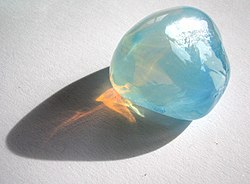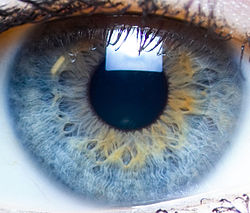Tyndall effect

The Tyndall effect is when light is scattered by particles of matter in its path. It makes a beam of light visible by lighting the particles.
Under the Tyndall effect, the longer-wavelength light is more transmitted while the shorter-wavelength light is more reflected by scattering. In effect, blue light is scattered much more strongly than red light.
The blue of a clear sky, and the blue of blue eyes is caused by the Tyndall effect, not by a pigment. Its named after John Tyndall. Tyndall effect can also be observed when sunlight passes through the canopy of a dense forest. It happens due to the scattering of light by the particles of smoke and dust.
Tyndall Effect Media
The Tyndall effect in opalescent glass: it appears blue from the side, but orange light shines through.
Sunbeam exhibiting Mie scattering instead of Tyndall scattering.
Dust in the air exhibiting Mie scattering rather than Tyndall scattering
Flour suspended in water appears to be blue as only scattered light reaches the eyes and blue light is scattered by the flour particles more than red light








